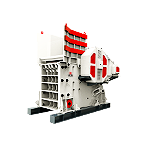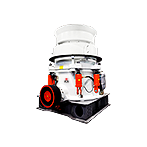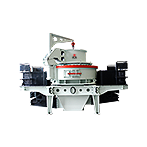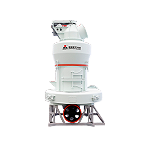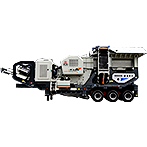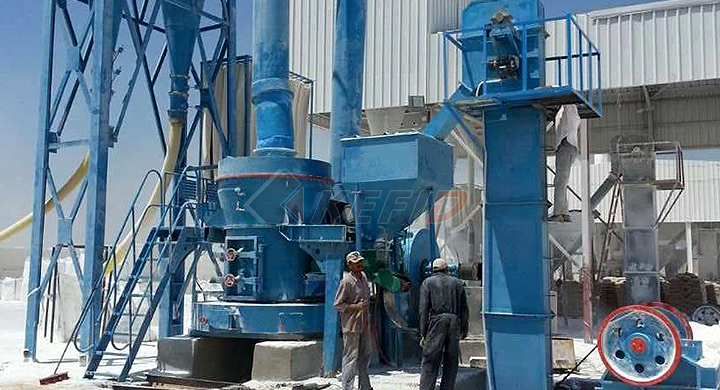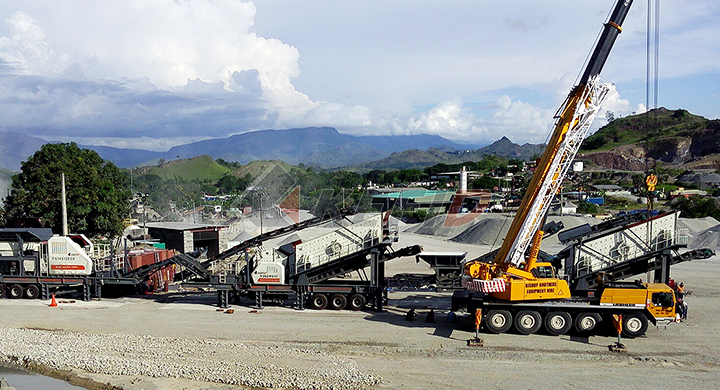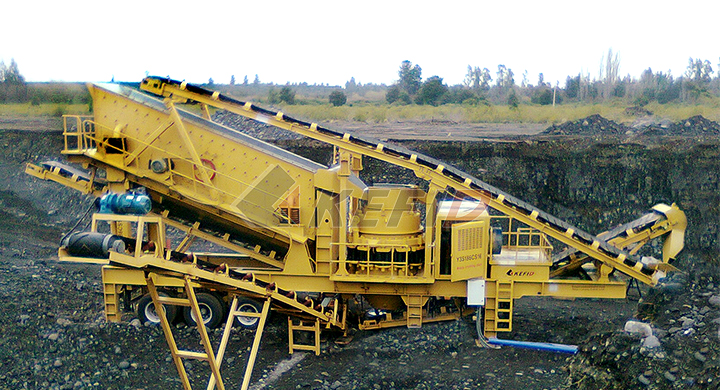магазин
explanation of cement production
KEFID,Дробильно-сортировочное оборудование Китая высокого качества, стандартное дробильное оборудование. На протяжении более 30 лет мы занимаемся исследованиями и разработками и производством дробильного оборудования, дробления зданий, промышленных дробилок и экологически чистых строительных материалов, и предлагаем профессиональные решения и дополнительные продукты для создания ценность для клиентов.
Онлайн сообщение
explanation of cement production

Cement Production an overview | ScienceDirect Topics
G Habert, in Ecoefficient Construction and Building Materials, 2014 101 Introduction Cement production has undergone tremendous developments since its beginnings some 2,000 years ago While the use of cement in concrete has a very long history (Malinowsky, 1991), the industrial production of cements started in the middle of the 19 th century, first with shaft kilns, which were laterCement Industry one of the leading sectors of the building materials industry, producing various types of cement, such as Portland, portland blastfurnace slag, portlandpozzolan, and special cements; the last category includes decorative, oilwell, aluminous, sulfateresistant, and quickhardening cements and cement for hydraulic engineering structuresCement Industry | Article about Cement Industry by The

Cement Production Process Explanation
Cement Production Process Explanation Little understanding of who the cement production process, cement production will be mentioned when it comes to two grinding a burn, e they are raw material preparation a mill, cement clinker processing plant, cement grinding two grinding a portland cement plant, cement production has the following main stagesprepare raw materials limestone is theThe top three cement producers of the world as recorded in 2010 are the USA, China, and India Among these countries, China alone manufactures about 45% of the total worldwide production of cement Global consumption of cement continues to rise since it is a nonrecyclable product and so every new construction or repair needs new cementWhat is Cement? History Chemistry Industries Civil

The Cement Manufacturing Process Advancing Mining
Domestic cement production has been increasing steadily, from 664 million tons in 2010 to about 805 million tons of Portland cement in 2014 according to the US Geological Survey 2015 Cement Mineral Commodity Summary The overall value of sales of cement was about $89 billion, most of which was used to make an estimated $48 billion worth ofThe top three cement producers of the world as recorded in 2010 are the USA, China, and India Among these countries, China alone manufactures about 45% of the total worldwide production of cement Global consumption of cement continues to rise since it is a nonrecyclable product and so every new construction or repair needs new cementWhat is Cement? History Chemistry Industries Civil

Cement slurry definition and meaning | Collins English
The cement slurry used in the drilling industry is a cement suspension with a high water content and a relatively low viscosity A cement slurry is forced into the annulus between the outside of the casing that has been run in the well and the walls of the borehole Cement slurry is a mixture ofCement IndustryIntroductionCement is a rocky powder that can be mixed with water and molded to any desired shape, after which it hardens to a rocklike consistency It is used worldwide both as a mortar to join bricks and blocks together and as an ingredient of concrete, which is mixture of crushed rock, sand, and cement that is used to construct buildings, bridges, roads, pipes, dams, andCement Industry | Encyclopedia

Cement Industry Overview
The cement industry is the building block of the nation's construction industry Few construction projects can take place without utilizing cement somewhere in the design Annual cement industry shipments are currently estimated at $75 billion for 2012; up from $66 billion in 2011The cement industry gets a useful material at much less cost 3 The community benefits as the waste products are not dumped in landfills, thereby saving large areas of land 4 There is significant contribution to reduced global warming effect by reduced GHG emissions 13 Potential for increasing production of blended cementsBlended Cement an overview | ScienceDirect Topics

Global cement production top countries 2019 | Statista
This statistic shows the worldwide cement production, by major producing countries, from 2015 to 2019 In 2019, cement production in the United States amounted to some 89 million metric tonsAug 17, 1971· Classification Code (SCC) for portland cement plants with wet process kilns is 305006, and the sixdigit SCC for plants with dry process kilns is 305007 Portland cement accounts for 95 percent of the hydraulic cement production in the United States The balance of domestic cement production is primarily masonry cement Both of these116 Portland Cement Manufacturing

Cement Manufacturing Process: What is Cement made of
For cement packing, cloth, jute, and highdensity Polythene (HDPE) bags are commonly used For convenience, the cement comes to the customer in bags containing measured quantity The standard bag of cement as distributed in India is commonly 50 kg or 112 5 lbs 2 Wet Process of Manufacturing of CementJan 08, 2020· Cement and iron and steel industry We hope the given MCuestions for Class 10 Social Science Manufacturing Industries with Answers will help you If you have any query regarding CBSE Class 10 Social Science Geography Chapter 6 Manufacturing Industries Multiple Choice Questions with Answers, drop a comment below and we will get back to you atMCuestions for Class 10 Social Science Manufacturing

Portland cement Wikipedia
Portland cement is the most common type of cement in general use around the world as a basic ingredient of concrete, mortar, stucco, and nonspecialty groutIt was developed from other types of hydraulic lime in England in the early 19th century by Joseph Aspdin, and usually originates from limestoneIt is a fine powder, produced by heating limestone and clay minerals in a kiln to form clinkerFor a more detailed account of the cement production process, see the Understanding Cement book View of a cement kiln (the long nearlyhorizontal cylinder) and preheater tower (Picture courtesy Castle Cement) Summary of production process Cement is typically made from limestone and clay or shale These raw materials are extracted from theCement manufacturing components of a cement plant

Cement Production Process Explanation
Cement Production Process Explanation Little understanding of who the cement production process, cement production will be mentioned when it comes to two grinding a burn, e they are raw material preparation a mill, cement clinker processing plant, cement grinding two grinding a portland cement plant, cement production has the following main stagesprepare raw materials limestone is theAug 17, 2017· Cement is corrosive to metals and therefore any metals in contact with cement should be corrosion resistant A normal type of cement that is used in the construction industry is also known as hydraulic cement because this powdery substance is generally mixed with water before useCorrosionpedia What is Cement? Definition from

cement | Definition, Composition, Manufacture, History
Cement, in general, adhesive substances of all kinds, but, in a narrower sense, the binding materials used in building and civil engineering construction Cements of this kind are finely ground powders that, when mixed with water, set to a hard massSetting and hardening result from hydration, which is a chemical combination of the cement compounds with water that yields submicroscopicAug 17, 2017· Cement is corrosive to metals and therefore any metals in contact with cement should be corrosion resistant A normal type of cement that is used in the construction industry is also known as hydraulic cement because this powdery substance is generally mixed with water before useCorrosionpedia What is Cement? Definition from

Cement Production Process Explanation
Cement Production Process Explanation Little understanding of who the cement production process, cement production will be mentioned when it comes to two grinding a burn, e they are raw material preparation a mill, cement clinker processing plant, cement grinding two grinding a portland cement plant, cement production has the following main stagesprepare raw materials limestone is theCement, in general, adhesive substances of all kinds, but, in a narrower sense, the binding materials used in building and civil engineering construction Cements of this kind are finely ground powders that, when mixed with water, set to a hard massSetting and hardening result from hydration, which is a chemical combination of the cement compounds with water that yields submicroscopiccement | Definition, Composition, Manufacture, History

Cement Manufacturing Process: What is Cement made of
For cement packing, cloth, jute, and highdensity Polythene (HDPE) bags are commonly used For convenience, the cement comes to the customer in bags containing measured quantity The standard bag of cement as distributed in India is commonly 50 kg or 112 5 lbs 2 Wet Process of Manufacturing of CementJan 08, 2020· Cement and iron and steel industry We hope the given MCuestions for Class 10 Social Science Manufacturing Industries with Answers will help you If you have any query regarding CBSE Class 10 Social Science Geography Chapter 6 Manufacturing Industries Multiple Choice Questions with Answers, drop a comment below and we will get back to you atMCuestions for Class 10 Social Science Manufacturing

(PDF) Cement Types, Composition, Uses and Advantages of
As cement industry is one of the biggest CO 2 emitters, it is appropriate to discuss different ways and means of CO 2 capture, which will be done next Finally, we give an account of production ofCement is a fine, gray or white powder which is largely made up of Cement Kiln Dust (CKD), a byproduct of the final cement product, usually stored as wastes in openpits and landfills (Although, the basic constituents of cement dust are calcium (CaCO3), silicon (SiO2), aluminum (Al2O3), ferric and manganese oxides) its production producesPOLLUTION DUE TO CEMENT DUST – IJERT

Cement manufacturing components of a cement plant
For a more detailed account of the cement production process, see the Understanding Cement book View of a cement kiln (the long nearlyhorizontal cylinder) and preheater tower (Picture courtesy Castle Cement) Summary of production process Cement is typically made from limestone and clay or shale These raw materials are extracted from theJul 31, 2013· Charge is introduced into a rotary KilnThe rotary kiln consists of a steel cylinder about 150meters long and 4meter diameter and rotates 30 to 60 turns per hourAt one end of the cylinder a screwCement Manufacturing

Cement definition of cement by The Free Dictionary
Define cement cement synonyms, cement pronunciation, cement translation, English dictionary definition of cement n 1 a A building material made by grinding calcined limestone and clay to a fine powder, which can be mixed with water and poured to set as a solid massCement manufacturing is the source of 5% of global CO2 emissions The cement industry is a natural producer of CO2: 60% of emissions are due to the transformation of raw materials at high temperatures (the "decarbonation" of limestone), 40% result from the combustion required to heat the cementManufacturing process | Home : Lafarge Cement

cement dust definition English
The cement/clinker ratio shall either be derived for each of the different cement products based on the provisions of Section 13 of Annex I or be calculated from the difference of cement deliveries and stock changes and all materials used as additives to the cement including bypass dust and cement kiln dustJun 19, 2020· Definition of Reinforced Cement Concrete Reinforced Cement Concrete (RCC) is a composite building material consisting of structural concrete reinforced with a reinforcing material like steel The most common reinforcement used is steel, due to its complimentary properties and it is called steel reinforced cement concrete or simply ReinforcedReinforced Cement Concrete (RCC) | Simple Explanation

Coal & cement | World Coal Association
The cement industry requires energy to produce cement Coal is an important source of the energy needed Cement is critical to the construction industry – mixed with water and gravel it forms concrete, a key construction material
